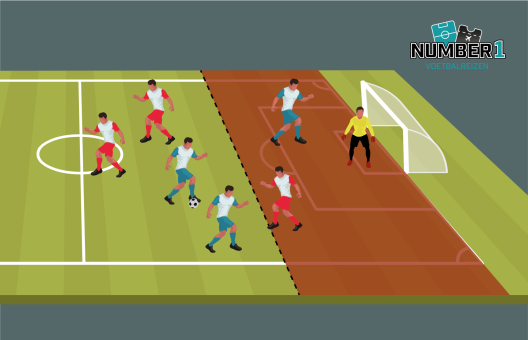What is offside? All offside rules listed
Offside is the most controversial rule in football. It often leads to discussion and the VAR usually has to be consulted. Ex-football player and FIFA employee Marco van Basten even wanted to get rid of the offside rule entirely. But what exactly is offside and how can you tell when someone is in an offside position? Discover everything there is to know about the offside rule.
What is the offside rule?
Offside is a rule in football that has existed since 1848. To keep things simple, we’ll start by explaining the easiest part of the rule: you can only be ruled offside at the opponent’s side of the field and only the team that is in possession of the ball can be ruled offside. Let this dawn on you for a moment.
And then there's the tricky part. Once on the opponent's half, you are offside when you’re closer to the opponent's goal line than the penultimate opponent and the ball. It’s usually the case that you’re waiting for the ball with only the goalkeeper standing ahead of you. You are offside in this situation. Just like the picture below.

It is not an offence to be in an offside position. It is only an offence when the ball is played towards you. The opponent then receives an indirect free kick.
The KNVB defines offside as follows: a player is in an offside position if any part of his head, body or feet is on the opponents' half of the pitch (except the halfway line) and he is closer to the opponents' goal line than both the ball and the penultimate opponent with any part of his head, body or feet.
I can imagine that this sounds complicated and that you do not entirely get it. The offside rule will become clearer once you see it. That’s why we recommend you to watch the video below:
When is a player in an offside position?
Receiving the ball in an offside position is an offence, but it's also an offence when you don't receive the ball, but are actively involved in the game. For example, by blocking your opponents, going for the ball but not touching it yet, or by doing a fake shot or overrun, which influences the opponent. If the ball changes directions and accidentally reaches you, it's also called offside. In other words: being in an offside position is punishable when you're actively involved in the game.
An interesting example of punishable offside is Heracles' disallowed goal against Ajax a few years ago:
Whether or not offside is punishable, is the most difficult aspect of the offside rule. Even many footballers and football fans don't know exactly how it works. So don't get frustrated when you don't get this part. As long as you understand the first chapter of this article, you're fine.
Exceptions to the offside rule
The offside rule has a few important exceptions. You cannot be punished for being offside if the ball is directly headed your way from a:
· Goal kick
· Throw-in
· Corner kick
This exception allows a team to gain a considerable advantage. For example by countering quickly with a long ball from the goal kick or a quick and far throw-in to the deepest attacking man on the pitch.
The newest offside rule (2022/23)
The offside rule changes from time to time. It was also altered in the season of 2022/23. If a player accidentally changes the direction of the opponent's ball, he no longer cancels offside. This used to be seen as a new situation: if a player accidentally touched the ball and the ball was passed to the opponent, it wasn't an offside situation.
As of this football year, a ball that changes directions will be considered offside if it arrives at a player who is in an offside position. The following example illustrates well why this rule got changed. Start the video from 9.30 minutes and you will initially think that Mbappé – the man who scores – is making a foul. Yet the goal is approved, because the sliding opponent grazes the ball before it reaches the scoring striker.
With all this newly acquired information, you will definitely be ready for a football trip! Curious about our offer? We have listed a selection of our top offers for you. Have fun!



